NOE supports you at every stage of your clinical evaluation
Discover NOÉ's capabilities
01
NOÉ reduces the duration of a documentary analysis by at least 60%
- Minimize repetitive tasks
02
Identify 85% of relevant articles (TPR/Recall)
- Improving data quality
03
Optimizing the selection process
- Alleviate frustrations
- Reduce operating costs
PICOS Strategy
Define relevant keywords using the PICOS strategy, as recommended in the guidelines. The PICOS strategy is a method for defining key elements in search:
- Population (P): Specify the target population.
- Intervention (I) : Describe the intervention or indication studied.
- Comparison (C): Identify treatments or therapeutic alternatives.
- Results (O): Define the results or effects to be used as judgment criteria.
- Type of study (S): Specify the type of study to be used.
This strategy helps researchers to formulate targeted questions, design precise studies and conduct effective literature searches.
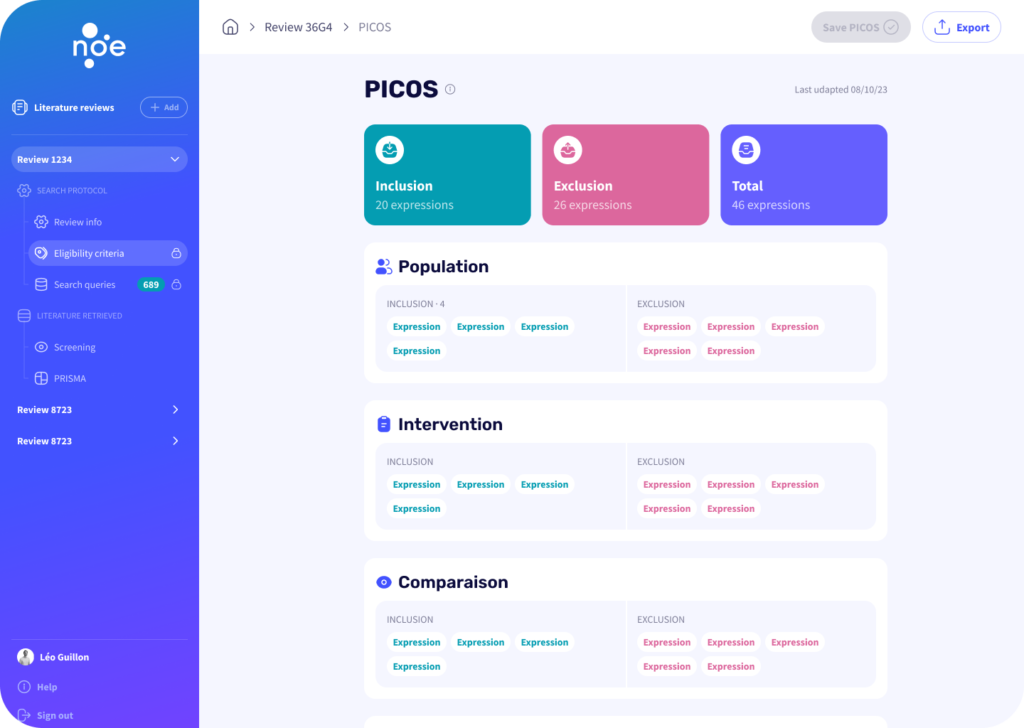
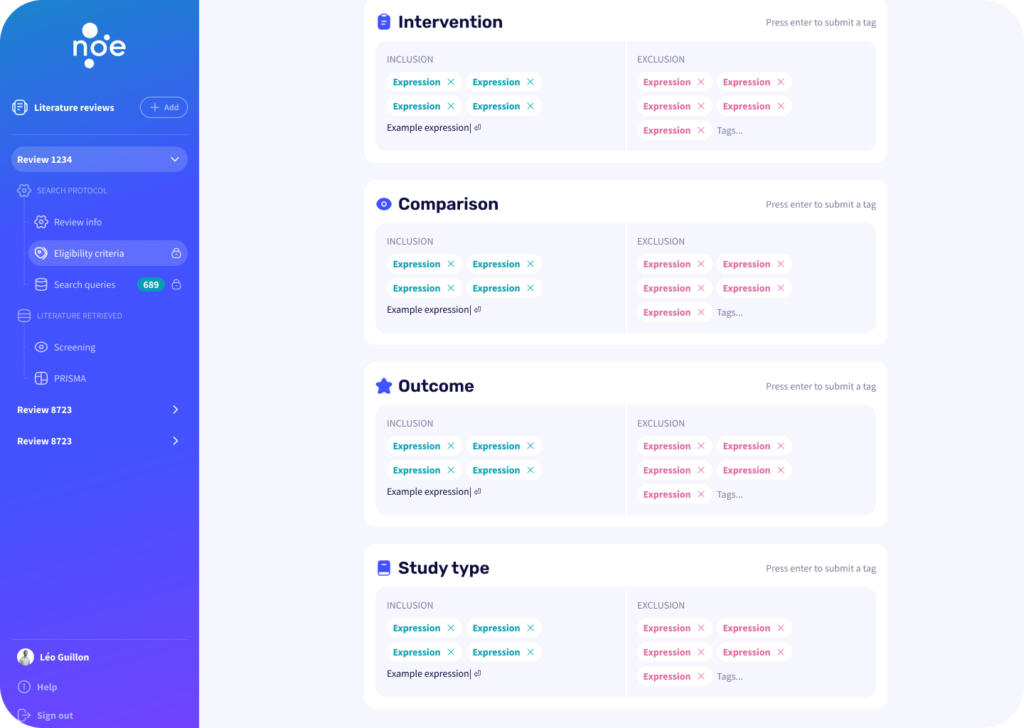
Machine Learning Algorithms & Deep Learning
Relying on AI’s inclusion and exclusion recommendations, users can optimize their identification and selection process. Using AI’s capabilities, users can :
- Optimize selection: AI algorithms can quickly sort through large datasets, helping users to focus on the most relevant information.
- Reduce bias: AI-based recommendations are objective and data-driven, reducing the influence of human bias in decision-making processes.
- Improve efficiency: Automating selection tasks frees up time for more human-value-added tasks, such as data analysis and copywriting.
- Increase accuracy: AI's ability to analyze large-scale data improves the accuracy of inclusion and exclusion decisions, leading to better results.
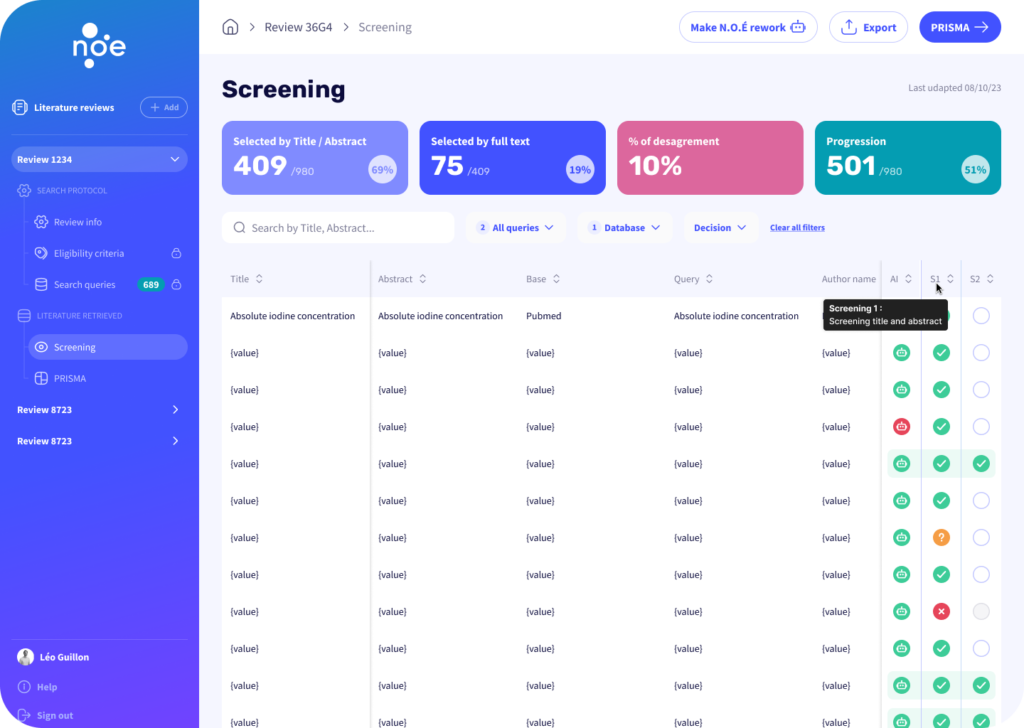
Highlighting Key Words
Highlight keywords in titles and summaries to locate relevant information directly.
By highlighting important words in titles and summaries, users can quickly locate key concepts and themes without having to read the whole document. This feature simplifies information retrieval and helps users understand the essential content.
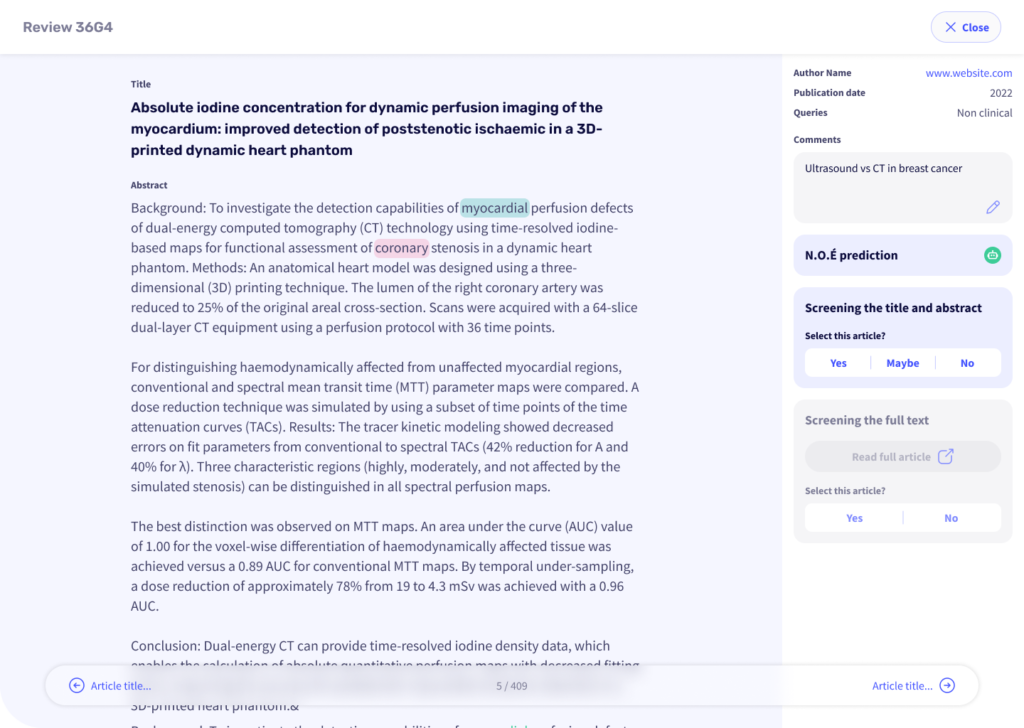
PRISMA Automated
Automating the creation of the PRISMA flow chart saves time and ensures compliance with guidelines. This feature generates a visual representation of the systematic review process, in line with PRISMA standards. It simplifies documentation, promotes transparency and facilitates understanding of the study selection stages in an efficient way.
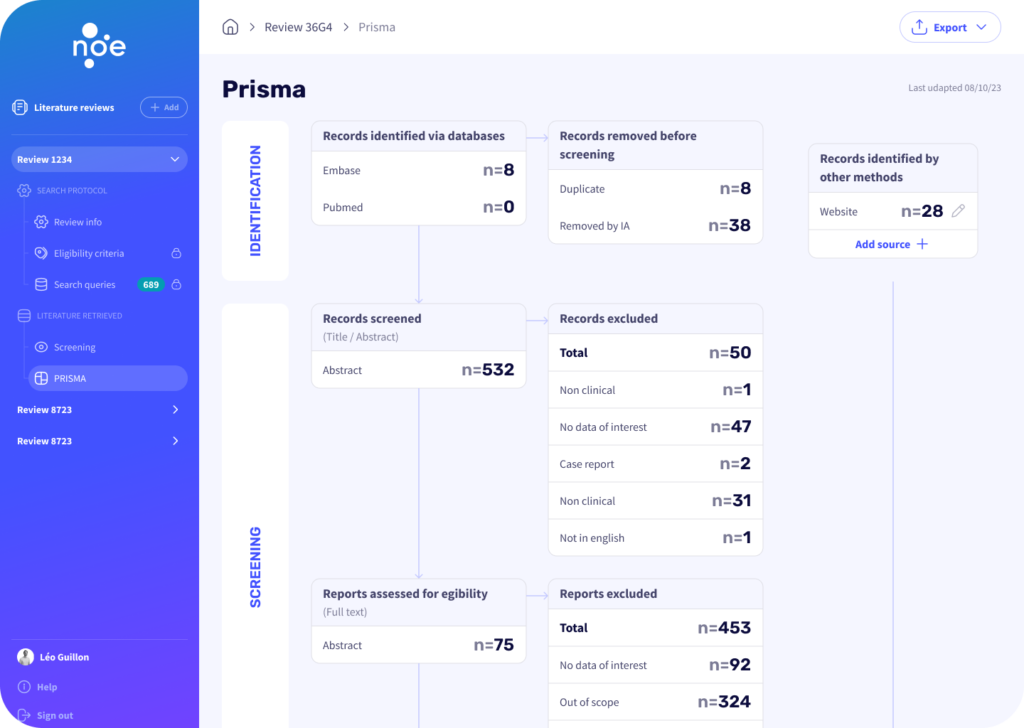
Smooth and simple interface
Intuitive interface for effortless operation. An intuitive interface makes operation effortless thanks to these features:
- Smooth navigation: Easy movement between functions.
- Ergonomic design: Clarity and visual user-friendliness.
- Context-sensitive guides: Integrated help for understanding steps.
- Customization: Adaptation to individual preferences.
- Responsiveness: Fast and fluid interactions for an efficient user experience.
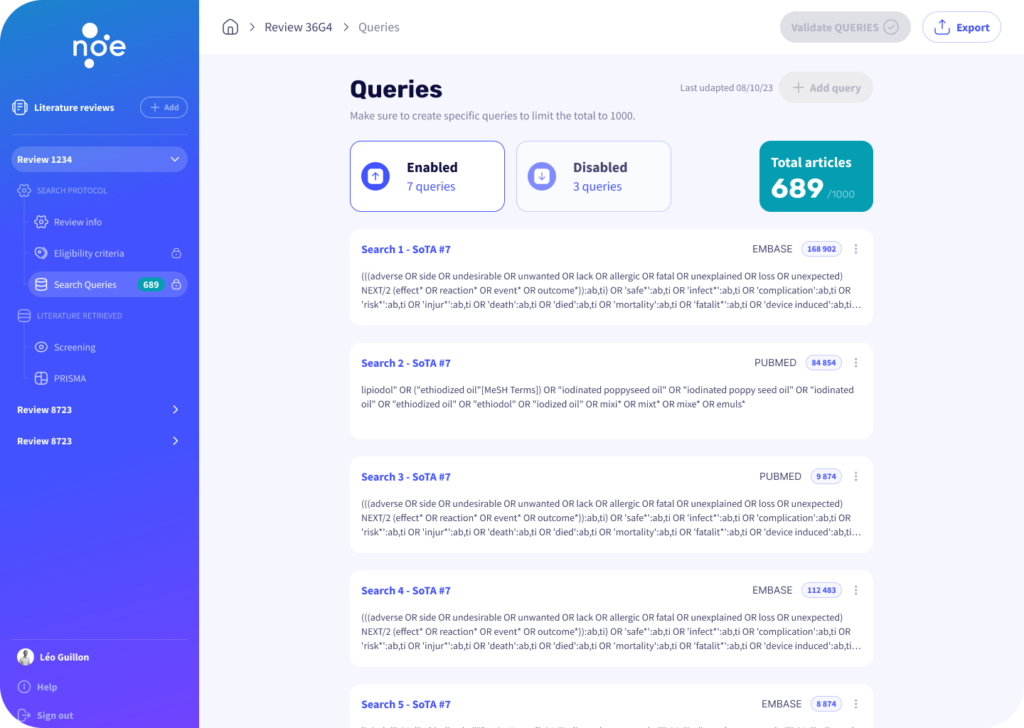
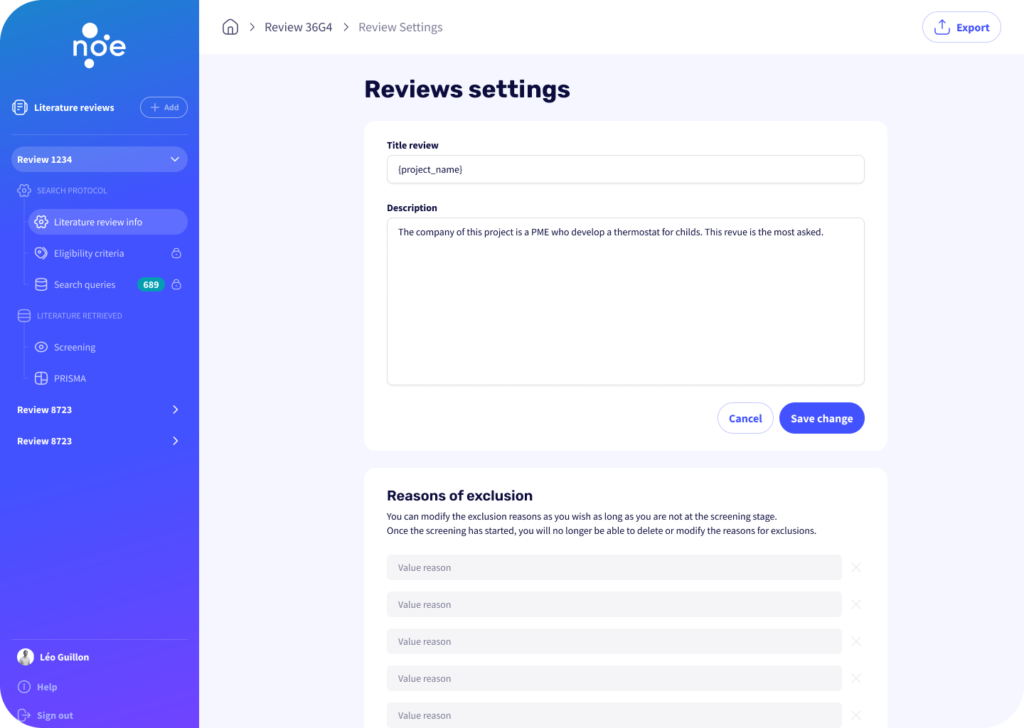
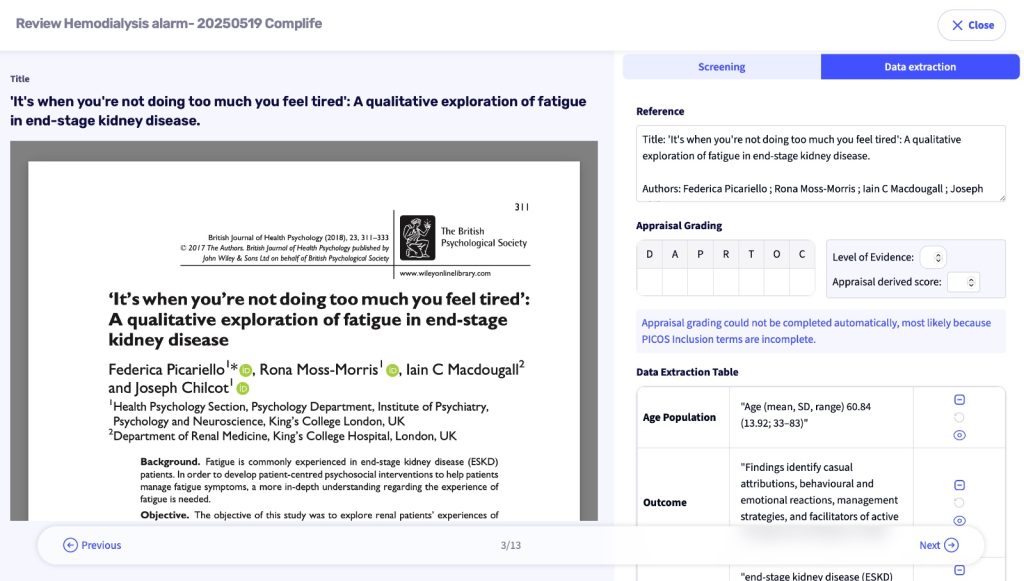
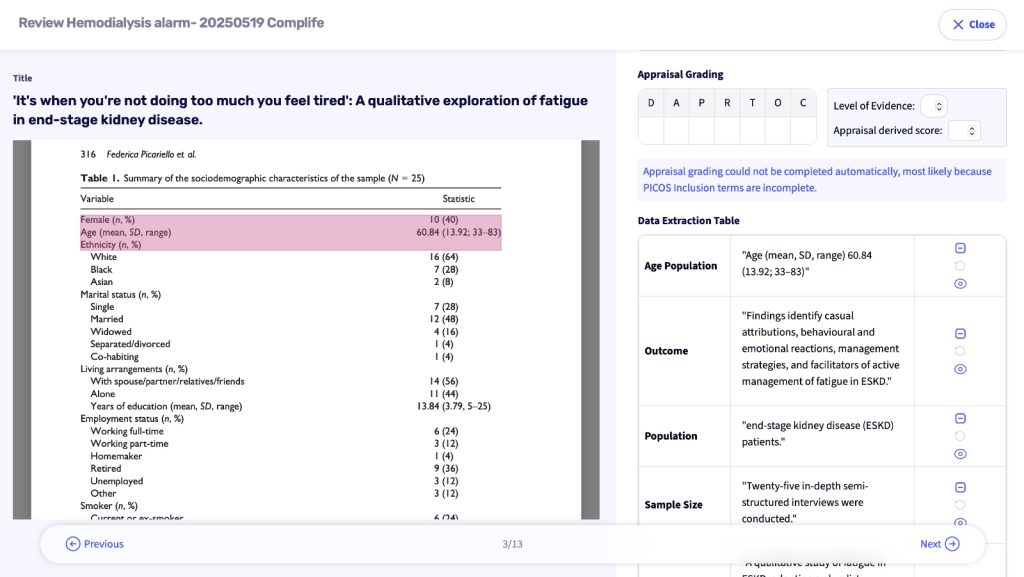
Data Extraction
NOÉ incorporates a data extraction module designed to facilitate the analysis and exploitation of scientific articles. By combining artificial intelligence and structuring tools, users can :
- Automatically identify key information: based on an extraction table, AI highlights relevant elements according to defined themes (inclusion criteria, interventions, results, etc.).
- Save time on reading: words and expressions detected in the article are highlighted, enabling rapid navigation to the passages of interest.
- Support grading with Appraisal Grading : articles are automatically or manually graded according to their relevance, guiding users in selecting the most reliable sources.
- Combine automation and human validation: AI suggestions can be adjusted, ensuring a balance between processing speed and scientific rigour.
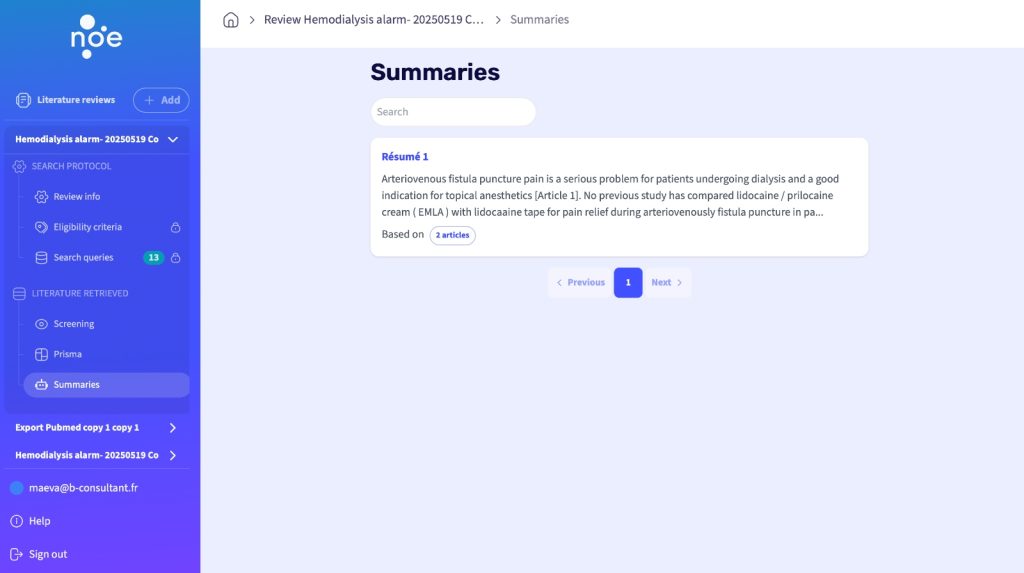
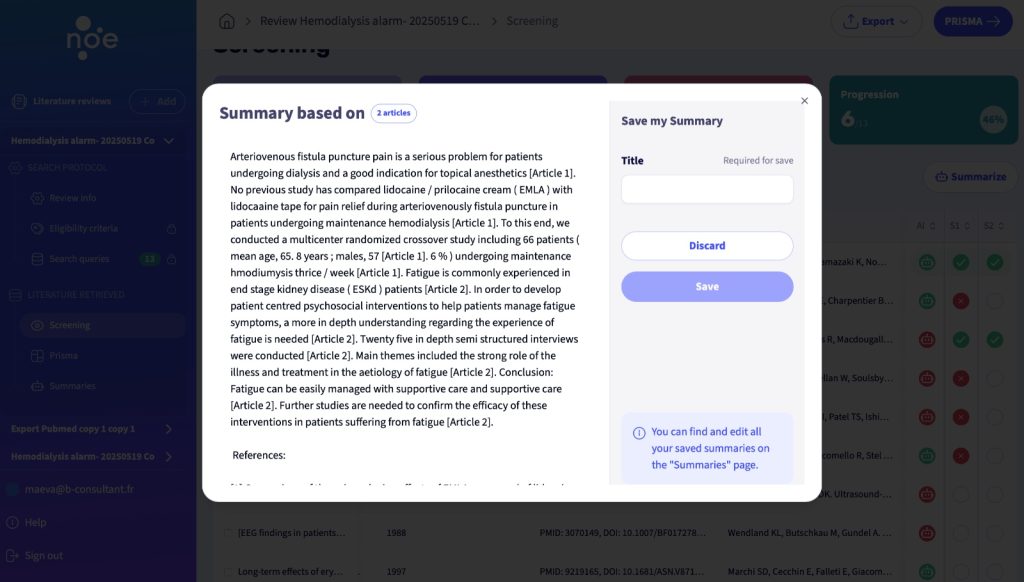
Summary
NOÉ’s Summary functionality generates clear, structured summaries from user-selected scientific content. By combining manual selection and assisted generation, users can :
- Create a targeted summary : by selecting extracts deemed relevant from different articles, the user builds a tailor-made corpus from which the application automatically generates a synthetic summary.
- Keep references : each piece of information included in the summary is associated with its source, guaranteeing traceability of the data and making it easier to re-read or quote.
- Add a personalised title : users can name their summary to give it context, or organise it according to their own criteria (review by subject, pathology, period, etc.).
- Save time when summarising: automatic generation reduces the time needed for writing, while maintaining the quality and scientific rigour of the selected content.
- Centralise useful information: abstracts are stored in NOÉ, allowing rapid access to key elements extracted from several articles in a single document.


